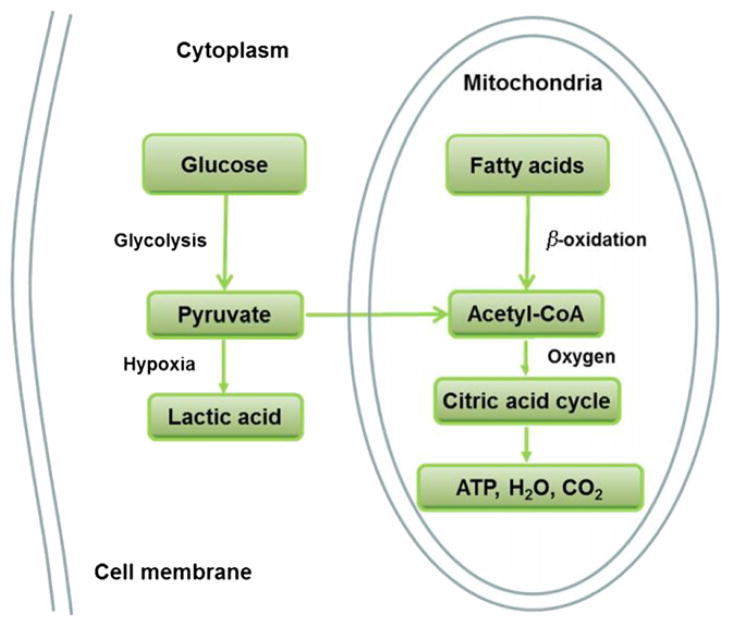Figure 2.
Glucose and fatty acids catabolism in cells. Glucose breaks down into pyruvate in the process of glycolysis. In the hypoxia condition, pyruvate becomes lactic acid in the cytoplasm and released out of cells. In the presence of oxygen, pyruvate is converted into acetyl-CoA by PDH in the mitochondria, and then used in TAC cycle for ATP production. The byproducts are water and carbon dioxide. Fatty acids breaks down into acetyl-CoA through β-oxidation in mitochondria, and then used in ATP production through TCA cycle. In hypoxia condition, fatty acid cannot be used in ATP production.

